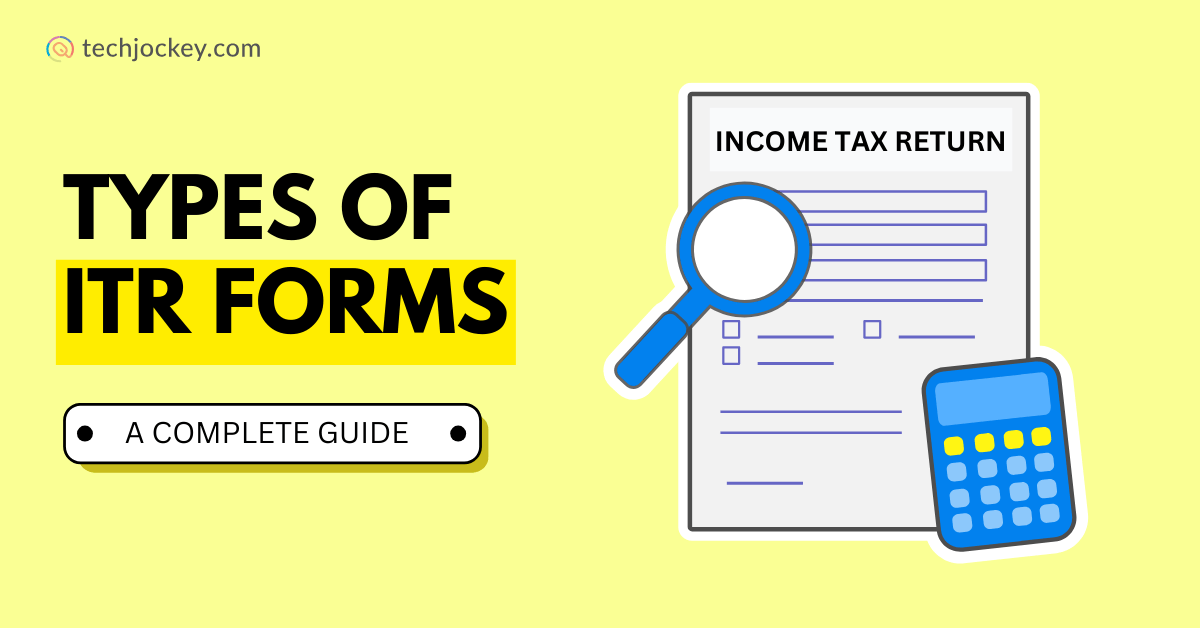
Filing your Income Tax Return is not just a formality; your compliance depends on it. In the FY 2023-2024, over 86 million people filed ITR, and for FY 2024-2025, the number is expected to cross 91 million.
So, if you are in this list, the question is which type of ITR should you file? Which ITR form should you use?
Since the source of income of every taxpayer is different, there are various ITR forms introduced by the government. The different categories are for salaried individuals, business owners, organizations, and even trusts/NGOs.
Let me explain all the types of ITR forms in detail to be used in FY 2024-25.
ITR-1, which is called Sahaj, is a form to be used by resident individuals whose total income is less than or equal to INR 50 lakh. It is the simplest form, which is often used by salaried employees and pensioners.
This ITR form is excluded for the categories – HUFs or companies.
Who can use this form?
ITR-2 is another type of ITR form and is meant for individuals and Hindu Undivided Families (HUFs) who do not earn from business or profession. It is generally used by people with multiple income sources, like capital gains or foreign income.
Who can use this form?
ITR-3 applies to individuals and HUFs that generate income from business. It
also includes partners in firms and those that are not entitled to ITR-1,
ITR-2, and ITR-4.
Who can use this form?
One other form of ITR on the list is ITR-4. Also referred to as Sugam, it applies to individuals, HUFs, and firms (except those LLPs which choose the presumptive taxation regime in Sections 44AD, 44ADA, or 44AE). The small businesses, freelancers, and professionals primarily use this form.
Who can use this form?
ITR-5 applies to entities other than individuals, HUFs, or companies. It is mainly used by partnerships and other associations.
Who can use this form?
ITR-6 is a type of ITR form applies to companies except those that have claimed exemption under Section 11 (charitable or religious trusts).
Who can use this form?
ITR-7 is another type of ITR form and is primarily applicable to individuals/companies that are required to file ITR under Sections 139(4A–4F).
It primarily addresses trusts, NGOs and charitable, political, and research institutions.
Who can use this form?
There are a few supporting forms and documents that are required, along with choosing the right type of ITR form.
1. Form 16: This document is required by salaried people to file ITR. It is issued by your employer annually, and it has two parts.
Part A: This part shows the TDS (Tax Deducted at Source) deducted from your salary.
Part B: It contains details of your total income, deductions claimed, and the estimated tax payable.
2. Form 26AS
Form 26AS is a consolidated statement that shows all TDS deducted on your behalf during the year. It also covers the income on which TDS was charged, specific financial transactions (SFT), and even turnover according to GST records. It is like a cross-checking tool for the taxpayers prior to filing returns.
3. Form 10-IEA
This form is required if you want to opt for or switch out of the new tax regime.
4. Form 10B
This type of ITR form is applicable for trusts and institutions to claim exemptions and benefits.
Before you go for filing ITR, there are a few documents you need to keep ready. These are PAN card, Aadhaar card, Form 16/26AS, your bank details, interest certificates, any donation receipts, and investment proofs.
You can either file directly through the government portal or use an income tax software to simplify the process.
Here’s how you can file ITR online through the government portal:
Important: The last date to file ITR for Financial Year 2024-25 is 15th September 2025. This date has been extended from July 31, 2025. In case you missed filing till the due date, you have to pay late fees afterwards.
Conclusion
The right type of ITR form and its submission at the right time guarantee that you are tax compliant. As over 91 million ITRs are expected to be submitted during AY 2025-26, taxpayers must keep a check on the proper ITR forms, supporting documents, and deadlines to submit tax returns.
Be it if you are self-employed, an organization, salaried, or a trust, you all have a certain type of ITR form that fits you. Filing properly not only will help you to avoid penalties, but it will also enhance your financial credibility.
Smartphones have completely transformed how we bank, making money transfers and payments quicker and more… Read More
Ever come across an AI chatbot giving weird medical tips? Or one, as hiring… Read More
Recruiting now does not occur over table-it mostly begins on a screen. This has… Read More
Did you know approximately two-thirds of total organizations who use generative AI have deployed it… Read More
How would you feel if your organization was under attack and you had no idea… Read More
Picture this It’s 6 PM, your team was online all day, juggling between video calls,… Read More